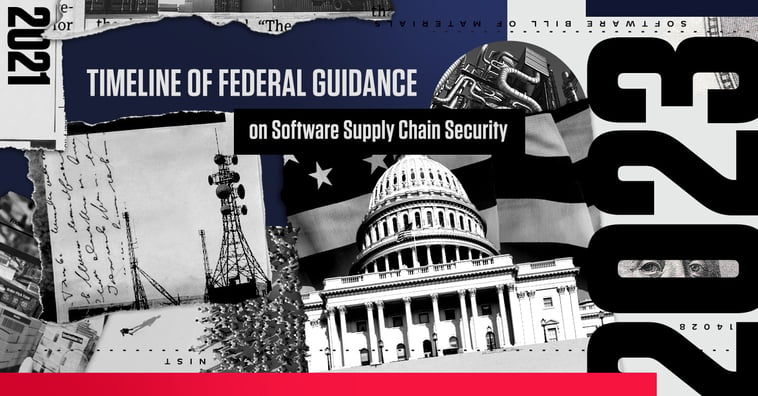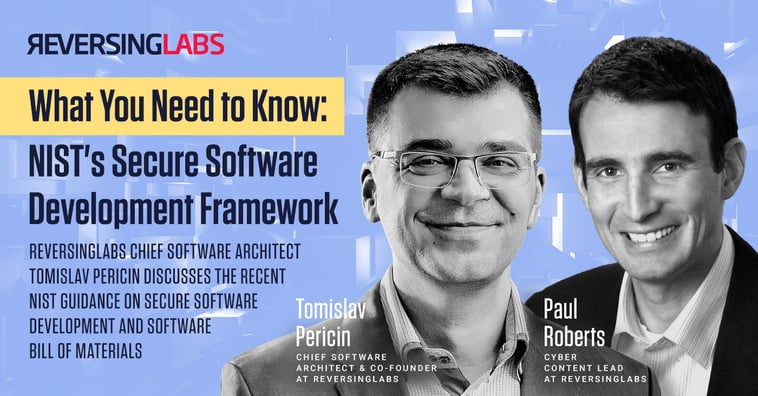Video
Blog Report

New supply chain mandates: Uncle Sam wants you (to secure your software)!
Learn moreSpecial

Secure Software Development Framework — A comprehensive approach developed by NIST to building, deploying, and maintaining software applications with security as a core focus. SSDF encompasses a set of methodologies, practices, and guidelines designed to integrate security seamlessly into the software development life cycle (SDLC). By prioritizing security from the inception of a project, SSDF aims to identify and mitigate potential vulnerabilities and threats proactively.
By following the SSDF, organizations can ensure that security is integrated into every stage of the software development process. This proactive stance reduces the risk of security breaches and data leaks and enhances overall system reliability, customer trust, and regulatory compliance.
Requirements and design: Clearly defining security requirements and integrate security considerations into the initial design phase
Threat modeling: Identifying potential threats and vulnerabilities early in the development cycle to prioritize security measures effectively
Secure coding: Enforcing coding practices and adherence to coding standards, and implementing security mechanisms to prevent common vulnerabilities
Static code analysis: Conducting automated source code analysis to identify vulnerabilities and security weaknesses
Dynamic code analysis: Testing the application in runtime to detect security flaws not evident in static analysis
Security testing: Performing comprehensive security testing, including penetration and vulnerability assessments
Security documentation: Creating clear and accessible security documentation for developers, testers, and other stakeholders
Security training and awareness: Ensuring that all team members are trained in secure coding practices and aware of potential security risks
Risk mitigation: Minimizing the risk of data breaches, financial losses, and reputational damage associated with security incidents
Cost savings: Identifying and addressing security issues early in the development cycle to reduce the cost of fixing vulnerabilities in later stages
Regulatory compliance: Meeting compliance requirements mandated by industry regulations and data-protection laws
Customer trust: Building customer trust by delivering secure applications that protect sensitive data
Faster time to market: Resolving security concerns efficiently, enabling speedier product releases
Competitive edge: Demonstrating commitment to security, differentiating from competitors, and attracting security-conscious customers
Nipping threats in the bud: SSDF integrates security seamlessly into every facet of the SDLC, from initial planning to deployment. By infusing security considerations from the outset, organizations are better equipped to identify potential vulnerabilities and threats early. This proactive approach significantly minimizes the risk of security breaches, reduces the cost of addressing vulnerabilities later in the process, and fosters a culture of security consciousness within the development teams.
Empowering teams through thorough training: Equipping development teams with the knowledge and skills to implement secure coding practices is a critical component of SSDF. Comprehensive training ensures that developers understand the intricacies of secure coding and are familiar with the principles underpinning the SSDF. By promoting awareness of potential security risks and how to mitigate them, organizations can empower their teams to make informed decisions and construct applications inherently resistant to cyberthreats.
Ensuring vigilance through regular assessment: A dynamic and ever-evolving threat landscape demands continuous vigilance. Regular assessments of an application's security posture are vital to stay ahead of emerging vulnerabilities. By combining automated and manual testing methods, organizations can identify security weaknesses that might otherwise go unnoticed. These assessments provide insights into the effectiveness of security measures, allowing for timely adjustments and enhancements to counter potential threats effectively.
Cultivating collaboration for collective security: Security is a collective responsibility that transcends individual roles and departments. Fostering collaboration among developers, security teams, and other stakeholders is a pivotal aspect of the SSDF. Open communication channels and shared responsibilities ensure that security is ingrained into the fabric of development processes. This collaborative approach promotes sharing insights, best practices, and innovative solutions, creating a united front against cyberthreats.
Staying agile through adaptation: The digital realm is in constant flux, with new threats emerging regularly. Organizations must adapt their security practices to address the latest vulnerabilities and attack vectors to remain resilient. Staying informed about emerging threats through continuous monitoring and industry insights allows for the timely adjustment of security strategies. This adaptive approach ensures that security measures remain relevant, effective, and aligned with the ever-evolving threat landscape.
Finance: Securely developing online banking applications to protect financial transactions and customer data
Healthcare: Building electronic health record systems with robust security measures to safeguard sensitive patient information
E-commerce: Developing secure payment gateways and e-commerce platforms to ensure safe online shopping experiences
IoT: Creating connected devices with embedded security features to prevent unauthorized access and data breaches
For further insights into the SSDF, explore the following articles:


